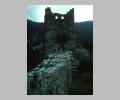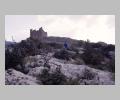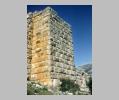| Summary: | A Megarian fortified city. |
| Type: | Fortified city |
| Region: | Megarid |
Periods:
Geometric
Archaic
Classical
Hellenistic
Roman
Physical:
Aigosthena is at a sheltered bay at the E end of the Gulf of Corinth. The site commanded the ancient route from Boeotia to the Peloponnese. It was never of great importance in antiquity and was mentioned by only one ancient writer, Xenophon in 378 B.C. It has not been excavated, but is considered one of the best surviving examples of Classical Greek military architecture.
Description:
Although surface finds suggest occupation in the area from Geometric to late Byzantine periods, the fortifications themselves belong to the 5th and 4th centuries B.C. Aigosthena belonged to Megara and formed part of the Achaean League in 244 B.C., although it had been under the control of Boeotia for a short time before the 2nd Macedonian War.
Sources Used:
Other Bibliography:





